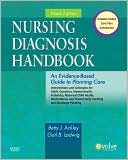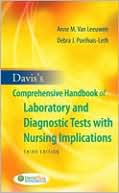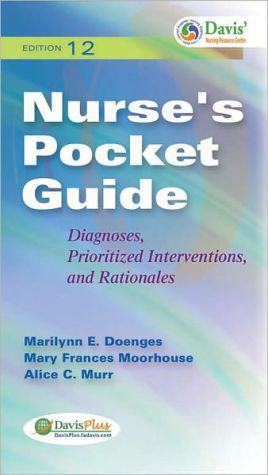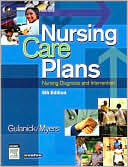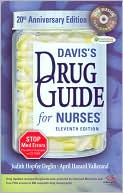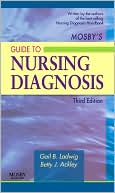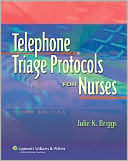Nursing Care Planning Made Incredibly Easy!
Nursing Care Planning Made Incredibly Easy! is the resource every student needs to master the art of care planning, including concept mapping. Starting with the nursing process, the book provides the foundations for writing practical care plans, walks students through the care planning process, builds the critical thinking skills needed to individualize care, and offers tips on incorporating evidence-based standards and rationales into nursing interventions. Coverage includes up-to-date NANDA...
Search in google:
Nursing Care Planning Made Incredibly Easy! is the resource every student needs to master the art of care planning, including concept mapping. Starting with the nursing process, the book provides the foundations for writing practical care plans, walks students through the care planning process, builds the critical thinking skills needed to individualize care, and offers tips on incorporating evidence-based standards and rationales into nursing interventions. Coverage includes up-to-date NANDA nursing diagnoses, NIC and NOC, and an English-NANDA dictionary that makes understanding nursing diagnoses fun. Sample care plans appear throughout the book.A bound-in CD-ROM contains over 150 customizable care plans. Doody Review Services Reviewer:Amy McClune, PhD, RN(Edinboro University of Pennsylvania)Description:This is one in a series of books that examine basic concepts and issues. The first section of the book reviews the nursing process while the second section provides nursing diagnoses based on medical diagnoses.Purpose:The book presents a step-by-step, easily understandable approach to planning care by building knowledge and critical thinking. It presents care planning as both an academic and a clinical process. The goal to clearly review the steps of the nursing process with the purpose of developing a relevant and usable plan of care is met.Audience:Written primarily for nursing students, this is an excellent basic introduction to the nursing process. The steps are clearly discussed with valid applications to clinical practice. Another audience that may benefit is nurses who have negative impressions of care planning. The importance and applicability of the nursing process in daily clinical practice is well communicated. As a volume in a series of books dealing with nursing issues, there is no specific author. An advisory board with members from small and large universities in both the U.S. and Canada oversee the content and 44 contributors and consultants who represent academic and practice settings provide content. Features:The first seven chapters focus on the nursing process. Important components are highlighted using illustrations and call-out boxes detailing mnemonics that will help readers remember specific content, tips for constructing and individualizing care plans, reminders of important points from the text, and the related evidence to support steps in the process. Nursing diagnoses that could be applied to specific medical diagnoses are detailed in the final four chapters. The book uses varied fonts, spacing, phrases, and illustrations to keep readers' interest. At first glance, the simplicity of these elements may imply that the book does not adequately address concepts important to planning nursing care. However, all relevant content is clearly communicated. A DVD accompanying the book reviews various medical diagnoses. A short overview of related pathophysiology and assessment cues, as well as a full plan of care that includes patient education that can be individualized, are presented. Interventions are categorized as independent or collaborative actions.Assessment:The book appears to be written for novices clearly presenting the nursing process. However, it provides a nice refresher for experts by stressing the importance of care planning in today's healthcare environment.
Advisory board ivContributors and consultants vForeword viiCare planning using the nursing processIntroduction to care planning 3Assessment 23Nursing diagnosis 61Planning 87Implementation 119Evaluation 143Putting it all together 159Nursing diagnoses by medical diagnosisMedical-surgical diagnoses 191Maternal-neonatal diagnoses 245Pediatric diagnoses 251Psychiatric diagnoses 263Appendices and IndexNANDA-I nursing diagnoses by domain 272Selected references 274Index 275
\ Reviewer: Amy McClune, PhD, RN(Edinboro University of Pennsylvania)\ Description: This is one in a series of books that examine basic concepts and issues. The first section of the book reviews the nursing process while the second section provides nursing diagnoses based on medical diagnoses.\ Purpose: The book presents a step-by-step, easily understandable approach to planning care by building knowledge and critical thinking. It presents care planning as both an academic and a clinical process. The goal to clearly review the steps of the nursing process with the purpose of developing a relevant and usable plan of care is met.\ Audience: Written primarily for nursing students, this is an excellent basic introduction to the nursing process. The steps are clearly discussed with valid applications to clinical practice. Another audience that may benefit is nurses who have negative impressions of care planning. The importance and applicability of the nursing process in daily clinical practice is well communicated. As a volume in a series of books dealing with nursing issues, there is no specific author. An advisory board with members from small and large universities in both the U.S. and Canada oversee the content and 44 contributors and consultants who represent academic and practice settings provide content. \ Features: The first seven chapters focus on the nursing process. Important components are highlighted using illustrations and call-out boxes detailing mnemonics that will help readers remember specific content, tips for constructing and individualizing care plans, reminders of important points from the text, and the related evidence to support steps in the process. Nursing diagnoses that could be applied to specific medical diagnoses are detailed in the final four chapters. The book uses varied fonts, spacing, phrases, and illustrations to keep readers' interest. At first glance, the simplicity of these elements may imply that the book does not adequately address concepts important to planning nursing care. However, all relevant content is clearly communicated. A DVD accompanying the book reviews various medical diagnoses. A short overview of related pathophysiology and assessment cues, as well as a full plan of care that includes patient education that can be individualized, are presented. Interventions are categorized as independent or collaborative actions.\ Assessment: The book appears to be written for novices clearly presenting the nursing process. However, it provides a nice refresher for experts by stressing the importance of care planning in today's healthcare environment.\ \

